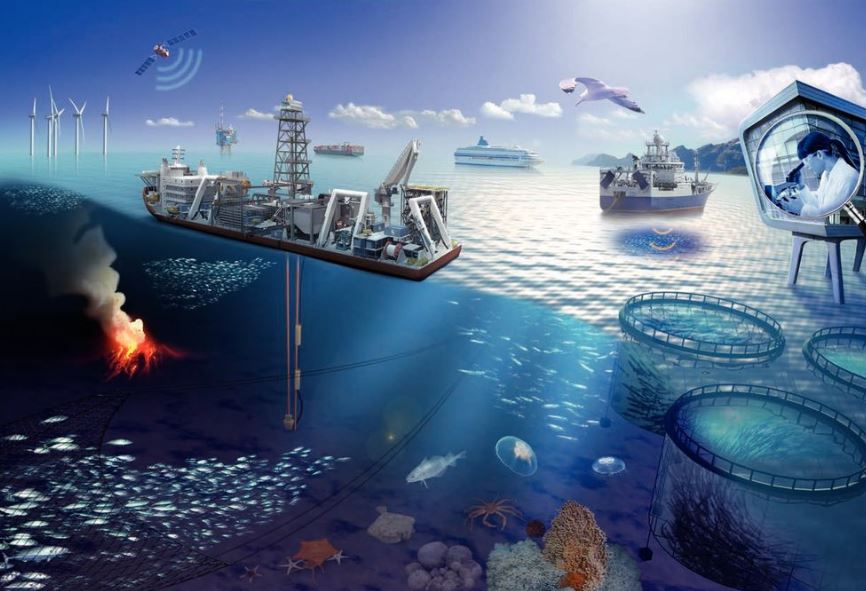Font size:
Print
India’s Light Fishing Crisis
Context:
India’s 7,500-kilometre coastline, home to diverse marine life and millions of fishers, faces increasing threats from light fishing. Despite a 2017 ban in India’s Exclusive Economic Zone (EEZ), inconsistent enforcement allows the use of high-powered artificial lights to lure fish, causing severe ecological and social disruption.
What is Light Fishing?
- Light fishing involves using high-powered artificial lights to lure fish and squid to the surface, making them easy to catch.
- This technique, powered by generators, has been outlawed in many regions, but enforcement remains weak or inconsistent, allowing the practice to thrive, particularly in states like Maharashtra, Tamil Nadu, and Andhra Pradesh.
Key Concerns Surrounding Light Fishing
- Ecological Consequences:
-
- Overfishing: Light fishing captures large quantities of juvenile fish, including bycatch, depleting fish populations and disrupting marine ecosystems.
- Depletion of Juvenile Stock: The technique targets juvenile fish, which threatens future generations of marine species and affects long-term biodiversity.
- Coral Reef Damage: Studies warn that light fishing contributes to coral reef degradation, further endangering marine life.
- Impacts on Marine Food Webs:
- Squid Vulnerability: Squid, an essential species in the marine food chain, are especially at risk. They are slow-moving and easily caught by light lures, disrupting the entire food web and starving larger predators.
- Cascading Effects: Overfishing and the depletion of key species like squid have a ripple effect, affecting entire marine ecosystems.
- Social Disruption Among Fishers:
-
- Disadvantages for Traditional Fishers: Small-scale fishers using hand-cast nets and country boats are increasingly at a disadvantage compared to mechanised vessels equipped with powerful lights.
- Growing Divide Among Fishers: In regions like Andhra Pradesh and Maharashtra, where light fishing bans are partial or not fully enforced, traditional fishers report dwindling catches, leading to socio-economic inequalities within coastal communities.
Challenges in Enforcement
- Weak Enforcement of National Laws: The national ban on light fishing in the EEZ was intended to protect marine life, but enforcement has been patchy. While some states like Gujarat have successfully imposed bans, others like Maharashtra, Tamil Nadu, and Andhra Pradesh have partial or ineffective restrictions.
- Monitoring Gaps: In some regions, authorities lack the resources and manpower to enforce bans effectively. For example, the Coastal Police and Navy, tasked with patrolling the coastline, often lack the capability to monitor waters beyond five nautical miles, where most light fishing occurs.
- Inadequate Fines and Penalties: While some states have taken action, like seizing light-fishing equipment and fining offenders, the penalties are often too lenient to deter illegal fishing.
- In Karnataka’s Gangolli, for instance, fines of Rs 16,000 were levied for violating the ban, a sum far less than the profits from a single light-fishing trip, which can exceed Rs 1 lakh.
- Collaboration Between Authorities: In some states, there have been efforts to collaborate with agencies like the Coast Guard and Navy to curb illegal fishing. However, the challenge remains that these bodies are primarily focused on national security, leaving traditional fishers to monitor and report violations themselves.
Learning from Global Examples
- Countries such as Italy, Croatia, and Japan have successfully regulated or restricted light fishing, showing that it is possible to balance innovation with sustainability.
- India’s current fragmented approach — a mix of national bans in the EEZ and varied state-level rules — is insufficient for protecting marine ecosystems and ensuring fairness for fishers. These examples provide valuable lessons for India, where stricter enforcement could help stabilise marine ecosystems and protect livelihoods.
Moving Toward a Comprehensive Solution
- Experts agree that a uniform, nationwide ban on light fishing is necessary to align with the United Nations’ Sustainable Development Goal 14, which emphasises ocean conservation and equitable access to marine resources. However, to ensure this ban is effective, stronger enforcement mechanisms are needed:
- Increased Patrolling: Authorities must bolster their presence and surveillance capabilities to monitor coastal areas more effectively.
- Stricter Penalties: Higher fines and penalties should be imposed to deter illegal light fishing activities.
- Subsidies for Sustainable Practices: Offering subsidies or financial incentives for sustainable fishing equipment could help traditional fishers transition away from light fishing methods.
- Education and Awareness: Educating fishers on the long-term benefits of sustainable practices and the dangers of light fishing is crucial.


